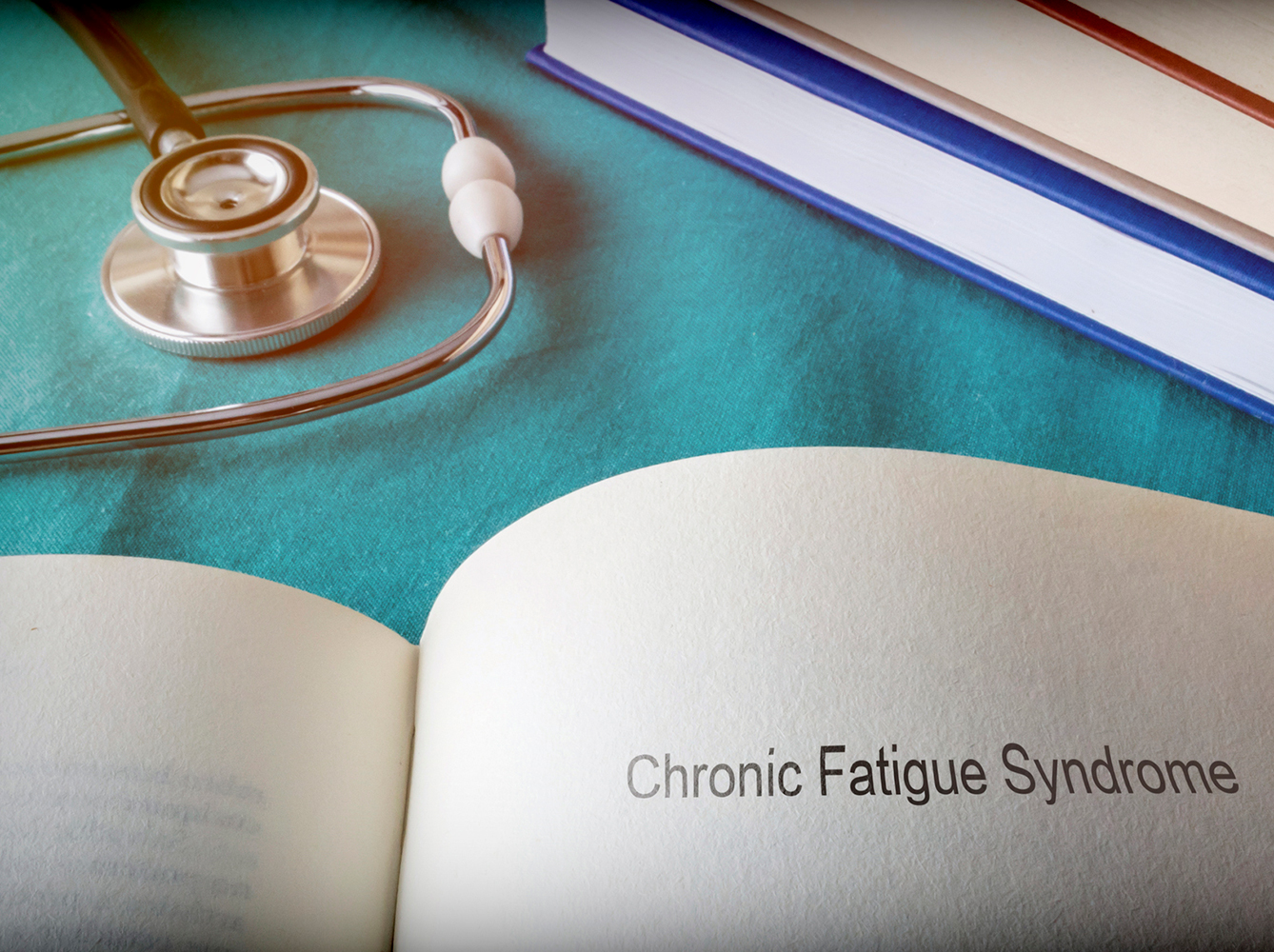The first step in coping is understanding what you’re dealing with
By Wendy Haaf
One day, Odile Gerin was a busy 46-year-old mother of three teenagers and eight months into a new full-time job she loved after years of juggling part-time work and family responsibilities. The next day—April 1, 1983—she woke up to find she was too dizzy and weak to get out of bed. And that was how she would spend much of the next two years.
“I was so happy, and then, boom!” she recalls. “My life changed.” Though Gerin was so debilitated that someone was dispatched to her house for blood tests, results showed no infection or other obvious abnormalities. Drugs to combat dizziness didn’t help. The specialist to whom she was referred declared that she was depressed because her eldest child would be leaving home shortly. Both Gerin and her family physician knew that verdict was wrong, and it would be years before she received a correct diagnosis: chronic fatigue syndrome, also known as myalgic encephalomyelitis (collectively known as CFS/ME). Still, back then, many doctors dismissed the condition as either a mental disorder or simple malingering—beliefs still widely held, though a growing body of research has shown that CFS/ME is in fact a physical illness.
Diagnostic Difficulties
The scientific evidence is so compelling that a 2015 report from an influential independent advisory body called the National Academy of Medicine (NAM) identified CFS/ME as “a complex, systemic, serious disease.” The symptoms—which often last for years—can be so debilitating that, according to the NAM, one-quarter of patients with CFS/ME are bedbound or housebound at some point during their illness.
According to the 2010 Canadian Community Health Survey, 411,000 Canadians are living with CFS/ME, but that may not be the whole story—a US study suggests that up to 80 per cent of cases go undiagnosed. CFS/ME is more common and severe in women, who make up 70 per cent of those affected, and often comes on around or after menopause, although it can strike at any age.
“There are barriers to patients getting diagnosed,” notes haematological pathologist Dr. Alison Bested, the medical director for the Complex Chronic Diseases Program at BC Women’s Hospital and a clinical associate professor of medicine at the University of British Columbia, both in Vancouver. “The foremost is that medical doctors don’t receive any training in this area; no university in Canada has CFS/ME on the curriculum.” Consequently, few Canadian physicians are knowledgeable about the condition and just a handful specialize in diagnosing and treating it. At BC Women’s Hospital, for example, a program aimed at diagnosing patients with CFS/ME has a waiting list that is two years and 1,400 names long.
A wide and diverse range of symptoms, which vary from one person to another, is another roadblock to diagnosing the condition.
“The symptoms fall into five major categories,” explains Dr. Ric Arseneau, director of program planning with the Complex Chronic Diseases Program at BC Women’s Hospital. The two main symptoms are fatigue (not just tiredness but the kind of wrung-out all-in exhaustion that occurs at the peak of a bout of flu) lasting six months or more, and something called post-exertional malaise.
“That’s a fancy way of saying that if patients push themselves beyond their energy limits, they crash, and that crash can last one or more days,” Arseneau says. People with CFS/ME have an energy shortage, and what constitutes exertion can include everyday activities such as grocery shopping and mental tasks as basic as concentrating on what your conversational partner is saying in a roomful of cocktail chatter. Arseneau says a crash (basically a huge spike in symptoms) is “similar to borrowing money from the Mob: when you borrow energy from the next day, you pay it back with huge interest and you feel beaten up, just as you would by the Mob.” (Gerin describes the feeling as similar to having a wall fall on you.) This is a key feature of CFS/ME. “If you don’t have post-exertional malaise, you don’t fulfill the criteria for chronic fatigue syndrome,” Arseneau says.
Other main categories of
symptoms include sleep problems (such as insomnia and unrefreshing sleep), pain
(which can include muscle
and joint pain, generalized
pain, and headaches), and
cognitive problems (such as
brain fog and difficulty concentrating). To meet the diagnostic criteria for CFS/ME,
someone needs to have all of the above plus at least one symptom from the following list:
– involuntary nervous-system problems (such as nausea, vertigo, palpitations, and a sudden drop in blood pressure upon standing)
– issues with communication between the nervous and hormonal systems (including heat or cold intolerance and appetite changes)
– and problems involving the immune system (which can range from sore throat and tender lymph nodes to new sensitivities to foods and synthetic chemicals).
Apart from these diagnostic criteria, “you don’t need to do an extensive workup,” Arseneau says. “You just need to do some basic blood work to rule out some routine things, such as thyroid disease, anemia, and iron deficiency. And you need to screen for sleep apnea.”
Clues to Causes
What causes the condition underlying these symptoms? While that’s not yet completely clear, we do have some clues.
First, “there seems to be a genetic susceptibility to this,” Bested says.
“Genetic predisposition can include a family history of not just chronic fatigue syndrome but also things such as fibromyalgia, irritable bowel syndrome, migraines, and restless leg syndrome,” Arseneau says. Another predisposing factor is childhood trauma. “A high-stress childhood puts you in fight-or-flight mode all the time, so your adrenalin is ramped up, which changes the chemical and physical aspects of the brain,” Arseneau explains.
But these factors just load the gun. What pulls the trigger?
“Some sort of stressor,” Arseneau says. In most cases, it’s an infection, be it viral or parasitic—one wave of cases in Norway was traced to an outbreak of giardia that occurred when sewage spilled into the water system. “It can also be physical, like a car accident or fall, or a psychological trauma, such as going to war.”
There’s increasing evidence that CFS/ME is rooted in biology and physiology. For starters, in people with the condition, the mitochondria—tiny power plants found in most cells—“don’t function properly,” Arseneau says. In addition, normally, “if you measure someone’s ability to use oxygen on two consecutive days, it doesn’t change,” he explains. “But with a person with chronic fatigue, if you get them to exercise one day and then they crash, and you check their ability to use oxygen on the second day, you’ll see it has gone down by 50 per cent.”
A number of recent high-quality studies have also found that in such people, “there’s a disequilibrium in the immune system,” says Alain Moreau, a professor of biochemistry and molecular medicine at the University of Montreal’s Faculty of Medicine and scientific director of the Viscogliosi Laboratory in Molecular Genetics of Musculoskeletal Diseases at Saint-Justine University Hospital. (Moreau, who is also the vice-chair at the Institute of Musculo-skeletal Health and Arthritis Advisory Board of the Canadian Institutes of Health Research, is working on finding a biomarker for CFS/ME—that is, a substance in the body that could be measured both to diagnose CFS/ME and to accurately gauge the impact of potential treatments in clinical trials.) People with CFS/ME also show differences in brain activity both when awake and asleep. “It’s been shown on EEG studies that these folks’ brains are basically awake at night and asleep in the daytime,” Bested says.
Canadian researchers are also exploring “how the environment can get embedded in our biology and have long-term impacts on health,” explains Patrick McGowan, an associate professor of biological sciences at the University of Toronto Scarborough and the departments of cell systems biology, psychology, and physiology at the University of Toronto. That field of research—epigenetics—looks at how environmental factors such as stress, infection, and nutrition can change DNA, turning genes on or off and making them more or less active.
Using samples from biobanks in the United States (no such resource exists in Canada) and comparing those taken from people with CFS/ME to ones from matched healthy controls, McGowan and his colleagues have been trying to find out whether there are certain signature sets of changes that correlate with the type or severity of symptoms. “We’ve been looking at the response of immune cells to stress,” McGowan says, “and we think we’ve found different subpopulations of CFS/ME sufferers who will respond differently to the stress hormone cortisol.”
It’s hoped that findings such as these will lead to targeted treatments for CFS/ME in the not-too-distant future. Meanwhile, there are strategies that can help ease the burden of the disease and perhaps even prevent it from worsening if they’re applied early enough. (Currently, only an estimated 10 per cent of people who develop CFS/ME experience a significant prolonged remission in symptoms.)
“I think we could do a lot for these folks if they got diagnosed early,” Bested says. “The problem right now is that, because few people know about the disease and only a handful are doing this kind of work, patients are getting diagnosed five or 10 years later. By that time, the person hasn’t had the opportunity to do the kinds of things that would have helped them.”
Bested likens this scenario to diagnosing diabetes once it’s so advanced that the person has gangrene. She adds that when she’s been able to intervene soon after symptoms have begun, “people do much better than the ones I don’t see until they’ve been sick for 10 or 15 years.”




